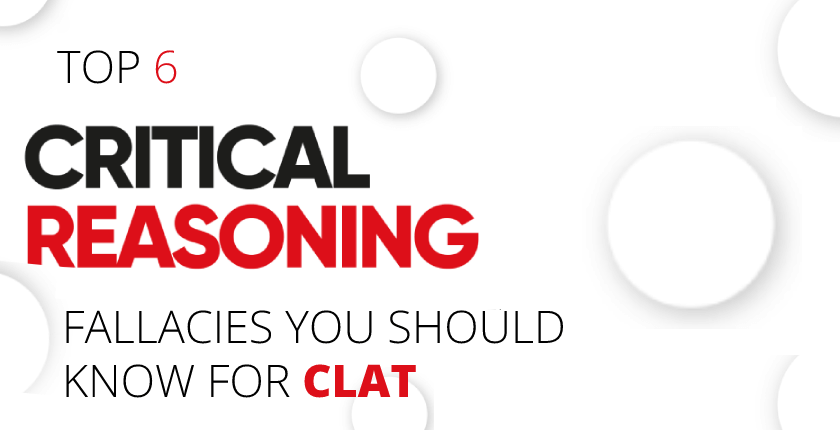When studying for the CLAT exam, it is important to be aware of common reasoning fallacies that can trip you up on the test. In this article, we will discuss 6 critical reasoning fallacies that you should know about for the CLAT exam. By familiarizing yourself with these fallacies, you can avoid making common mistakes on the test.
Critical reasoning is the process of analyzing and evaluating arguments to determine whether they are valid or strong. It is an essential skill for anyone who wants to be able to think critically about the world around them.
Arguments are everywhere. We see them in the news, on social media, and in everyday conversation. Being able to analyze and evaluate these arguments is essential in order to understand the world around us.
Critical reasoning allows us to see beyond the surface of an argument and to understand the underlying assumptions and logic. It helps us to identify flaws and to see both sides of an issue. Without critical reasoning, we would be at the mercy of those who would seek to manipulate and mislead us.
We would be unable to make informed decisions about the world around us. Critical reasoning is an essential tool for anyone who wants to make sense of the world. It is a skill set that we must all cultivate in order to be able to think for ourselves and to make informed decisions.
There are many errors in critical reasoning, or flaws in critical reasoning, that can lead to inaccurate conclusions.
Contents
Here are some of the most common errors to watch out for:
1. Hasty Generalization:
Drawing a conclusion based on too small of a sample size.
For example, if you only talk to two people from a different country and they both say they don’t like it there, you might conclude that everyone from that country must not like it there. However, this would be a hasty generalization because you haven’t talked to enough people to know for sure what the general consensus is.
2. False Dilemma:
Presenting only two options when there are actually more.
For example, you might say to your friend, “You can either come to the party with me tonight or you’re not my friend anymore!” This is a false dilemma because there are more than two options – your friend could also choose to not go to the party and still be your friend.
3. Slippery Slope:
Assuming that one small event will lead to a string of disastrous events.
For example, you might think, “If I don’t get an A on this test, then I’ll never get into college and my life will be ruined!” This is a slippery slope because getting a bad grade on one test does not necessarily mean that your whole life will be ruined.
4. Confirmation Bias:
Only seeking out information that confirms your existing beliefs.
For example, if you already believe that all politicians are corrupt, you might only pay attention to news stories that confirm this belief, and ignore any stories that show politicians doing good things. This would be confirmation bias.
5. Over-simplification:
Making an overly-broad or general statement that doesn’t consider all the complexities of a situation.
For example, you might say, “All immigrants are criminals.” This is an over-simplification because it doesn’t consider all the complexities of the situation – there are many immigrants who are not criminals.
| You Can Also Check | |
| OPUS CLAT Offline Full Test | Download Now |
| OPUS AILET Offline Full Test | Download Now |
| Try Out our Online CLAT Mocks | |
| CLAT Mock Test | |
6. Sunk Cost Fallacy
The sunk cost fallacy is a cognitive bias that occurs when people make decisions based on past investments instead of on the current situation.
For example, someone may continue to invest in a stock even though it is not doing well, because they have already invested so much money in it. This fallacy can lead to bad decisions, because people are not taking into account all of the relevant information.
Conclusion
By being aware of these errors in critical reasoning, you can avoid falling into them yourself and improve the quality of your arguments and answer critical reasoning questions for CLAT | AILET and other law entrance exams including the LSAT.
Register for A Free Demo Class:



